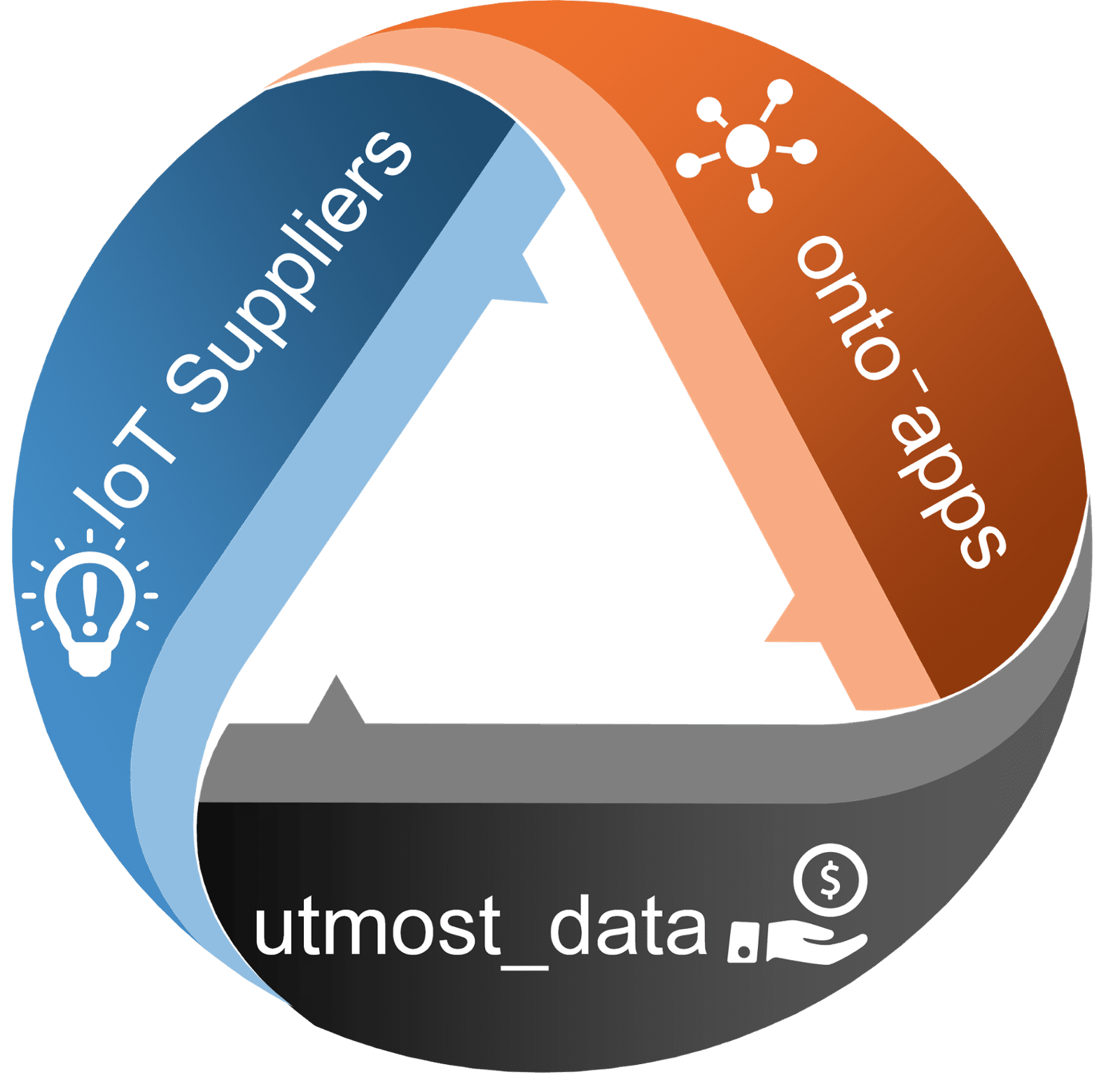Data-driven Society, People-centered Era

Digital Transformation Starts with You by onto⁻apps (code name)

Purpose of onto⁻apps development
Old yet new: the lifelog concept


An example of partially integrated apps
onto⁻apps 5W1H
onto⁻appsは以下の5W1Hをスコープにアプリ統合を実現します。
| Question | Answer |
|---|---|
| Why ? | Various IoT devices for supporting everyday life and physical activities, Web services, the growing popularity of mobile apps, etc., have contributed to the arrival of an era in which lifelogs (activity data tracking for people) can be effectively utilized. |
| What ? | The silo mentality arises when data is collected and utilized in vertical data flows as it is gathered by each individual IoT company It is possible for users to comprehensively collect and manage the various data streams arising from their daily life and physical activities. Such applications offer the means to safely and securely improve QOL. |
| Who ? | Anyone regardless of age, gender, interests, taste, place of residence, family structure or income |
| Where ? | Users can collect and analyze consolidated data generated by diverse sources such as grocery store and convenience store shopping apps, online shopping apps, restaurant apps, gaming and leisure apps, IoT home organization apps, cashless payment apps, physical healthcare, mental health care and exercise tracking apps. |
| When ? | Lifelog can permanently save anything captured or generated by individuals or the family members. It can be used by and contribute to society and service companies anonymously if users want to do this. |
| How ? | Data generated by each application tracking a user’s daily activities and physical activities can be accumulated and integrated as a lifelog. This easily accessible system enables individuals to collect data through secure distributing management systems such as blockchain in a secure environment. |
Features
- Various functions and applications such one-click, lifelog and log-in can be integrated into a single application platform
- A consolidated management system for registering and updating personal information
- Automatic data collection, accumulation, compilation and analysis by consolidating data streams from each application
Examples
-Data on physical activities (weight, exercise, heart rate, blood pressure and physical condition)-Data on daily life activities (number of SNS posts and views, time spent using leisure apps, eating, etc.)
-Data on buying and selling activities (items purchased, amount spent, quality, time, satisfaction evaluation, etc.)
- Creating a private lifelog with customized data collection items
- How lifelog analysis can generate proactive improvement guidelines for being more environmentally conscious
- Sharing information and tips on environmental consciousness among onto⁻apps users
- Data liquidity with Utmost Data Engagement

Utmost Data Engagement by utmost_data (code name)
An example of data distribution systems
utmost_data 5W1H
The following 5W1H explains how utmost_data optimizes data engagement.
| Question | Answer |
|---|---|
| Why ? | We are in an era where an individual’s data in the 21st century can be likened to an oil resource in the last century. A lifelog offers an effective means of accumulating and analyzing the data an individual produces in their daily and physical activities. |
| What ? | utmost_data will revolutionize the way each IoT company currently uses incomplete datalogs by collecting and using incomplete datasets. The utmost_data system manages collected data from lifelogs through secure system environments to IoT users. |
| Who ? | Anyone who uses utmost_data and agrees to participate in lifelog business or data ecosystems and wishes to share in the profit derived from them. |
| Where ? | Business prosperity for the companies who have been dealing with the 4Ps of marketing (product, price, place and promotion) of goods or services. It is also possible to strive towards Society 5.0 where these functions serve as a public good. |
| When ? | utmost_data can be used in conjunction with onto⁻apps lifelog or separately. It can start, discontinue, or end anytime. Part or all of the data contents provided by a lifelog can be altered. |
| How ? | utmost_data can be synchronized with blockchain systems applied to onto⁻apps lifelogs. As well, packaged data can be created for companies and sales management data Virtual payment can be offered as consideration for the data provision by onto⁻apps users. |
Features
- onto⁻apps Lifelog data monetization
- Consolidating management on how to provide data (data provision destination, disclosed data, provision data price, etc.)
- Improving added value by delivering onto⁻apps users data in a packaged structure
- Data capitalization such as data re-provisioning
- Easy payment in exchange for data provision by adopting digital currency
New Data Ecosystem with onto⁻apps and utmost_data

Development Approach
Open-Source Software (OSS) Development
Utilizing the GitHub open platform for more technical expertise, marketers and consumers will participate in developing this application as fast as possible to improve the QOL through Open-Source software for everyone.
Development Project Management
- Easy to use UI and services designed for users
- Releasing sequential service functions every one to three months, creating developments and platforms based on mutual cooperation and the joint participation of users and through Agile development methods
- Fund raising with cloud funding and member recruitment
- Lifelog application onto⁻apps beta version release in August (planned)
| Project founders Seiho Budo Chief Strategic Officer | Makoto Kikutani Chief Technology Officer |
 |














